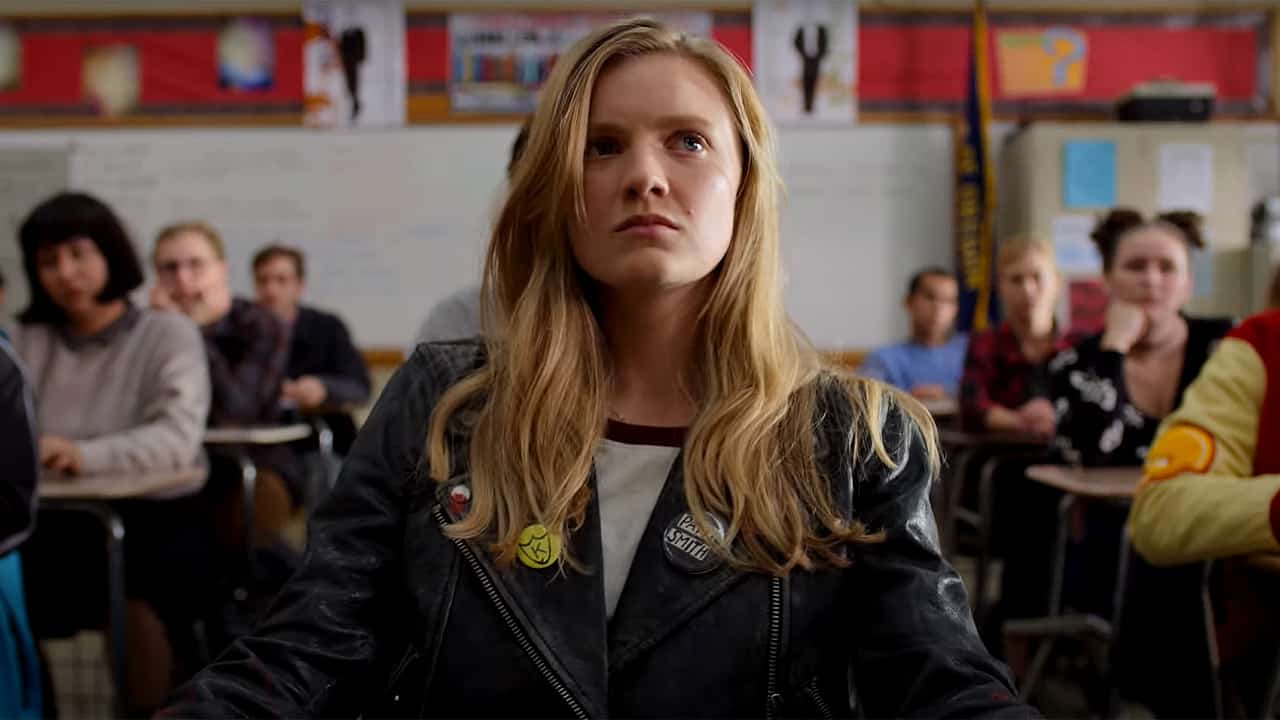REVIEW: Moxie starts a conversation that everyone needs to have

Based on Jennifer Mathieu‘s 2015 novel of the same name, the Netflix movie Moxie revolves around a shy 16-year-old Vivian. Exhausted with the sexist and toxic status quo at her high school, she gets inspiration from her mother’s rebellious past and decides to anonymously publish a zine. This, of course, sparks a school-wide, coming-of-age revolution that is perfect for this generation.
SPOILER ALERT!!!

Moxie starts a conversation that everyone needs to have
Under the direction of Amy Poehler herself, she stars opposite Hadley Robinson in this adaptation of the best-selling novel. Lead characters Vivian (Robinson) and Claudia (Lauren Tsai) of the movie have started to talk about female students being ranked for having the ‘Best Ass,’ ‘Best Rack, and ‘Hottest Selfie’ among others. This doesn’t stray away from real-life situations where young women have to be a certain type of beauty to be even classified as ‘pretty.’

Vivian has always preferred to keep her head down and fly under the radar. However, the arrival of a new student Lucy Hernandez (Alycia Pascual-Pena) forced her to examine the unchecked behavior of her fellow students running rampant at her high school. Thus, begin the conversation that everyone needs to have. Within ten minutes of the film, I was ready to punch Patrick Schwarzenegger’s character Mitchell in the face.

Females gotta stick together.
I would also like to punch the adults in the high school for objectifying these female students and for not even trying to listen when they are having problems with assholes in their class. The title itself Moxie refers to bold determination and spunk. It means energy, pep, courage, and determination – four values that both the movie and book represent.
The themes of feminism and rebellion in the movie remain incredibly strong. Although it remains flawed, it encapsulates a line in the movie, “Females gotta stick together. Number one untapped resource, women. There are more of us than them – breaking the glass ceiling. Lady power.”

Moxie: the differences between the movie and the book.
Movie-Vivian vs. Book-Vivian
Like other protagonists in coming-of-age films, Vivian starts out as a girl desperately trying to make it through high school. However, movie-Vivian proves to be a little bit more unassuming than book-Vivian. Sure, her on-page counterpart is still an introvert.
But, she is already aware of the patriarchal nonsense enacted by men around her. Movie-Vivian seems a little bit too oblivious that even with the influence of her loudly feminist mother, she just accepted the status quo for what it is. It’s not until she meets Lucy that movie-Vivian begins to reconsider her perspective.

Mr. Hands
In the book, Seth comes to Vivian’s life as a transfer student from Austin. The movie, on the other hand, features Seth as a long-time acquaintance who benefitted from a summer glow-up. His personality between two forms of media also undergone a bit of a change. Book-Seth was a cool-quiet type.
Meanwhile, movie-Seth remains a sweetheart with a dorky streak. However, the most attractive thing about him remains the same – being a proud ally. He is there for the Moxie movement right from the beginning, showing his solidarity and support without ever trying to take space from the girls at the center. A guy secure in his feminism? Let me repeat what Lucy’s exact words were… That’s hot.

Joining the Moxie club.
Although the activities associated with Moxie clearly remained essential to both tellings of the story, the book never made anything official. The Moxie zine became an inspiration for independent actions. However, the movie took that as inspiration and sit down together to make things a little more unified.
The movie featured a venting session at a party which quickly grew into something with a focus and agenda. Claudia even goes to an extra step – making it a recognized organization. Presenting Moxie as a club actually makes sense for a movie. It gives us a visualization of seeing the girls in collective action as they express the frustration they receive from their unrelenting environment.

No sports-talk in the book.
Given the setting of the movie, it’s amazing that the book barely dealt with the athletic culture at all. We see a school stereotypically obsessed with their football despite having a disgraceful win-loss status. Although the book featured a minor subplot about a bake sale to support the more successful girls’ soccer team, the movie gives us a lot more tension.
We see it become a major event when Principal Shelly tries to hand a football scholarship to Mitchell. Lucy decides to nominate Kiera, the captain of the girls’ soccer team. The campaign to see her athletic talent recognized became Moxie’s largest organized effort. Unfortunately, we see Kiera lose to Mitchell, giving us a visualization of how little a guy has to do to win in our society.

Principal Shelly
This character had the biggest difference between the book and the movie. In the book, Principal Shelly is actually Mitchell’s father. When he covers up for his son, it hits very differently when Shelly refuses to take her students’ toxic behavior seriously. As a woman, we expect Shelly to empathize with the experiences of her female students.
However, she remains less interested in justice than she does in keeping up appearances. The film gives us an interesting approach as we watch a female character work so hard to ignore sexism and prop up an unjust system. This shows us that some women have internalized the misogyny of the world around them.

Have you watched Moxie yet? Let us know!
Angela Grace P. Baltan has been writing professionally since 2017. She doesn’t hesitate to be opinionated in analyzing movies and television series. Aside from that, she has an affinity for writing anything under the sun. As a writer, she uses her articles to advocate for feminism, gender equality, the LGBTQIA+ community, and mental health among others.










